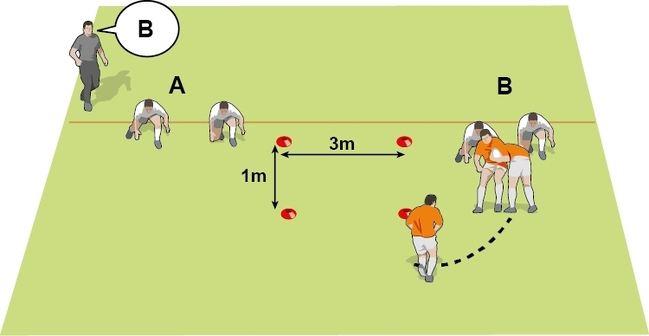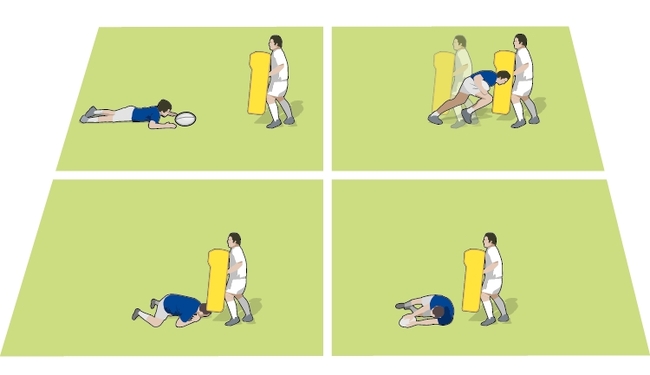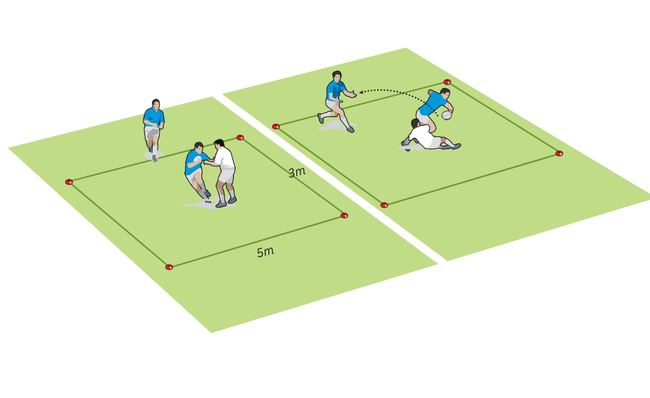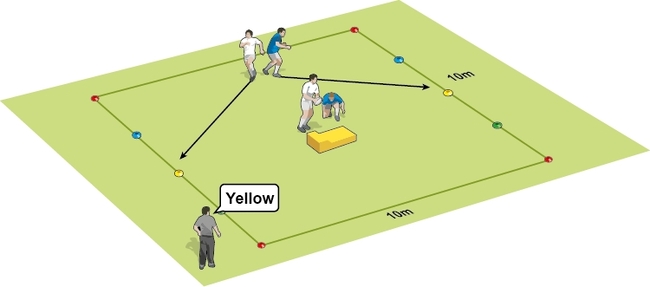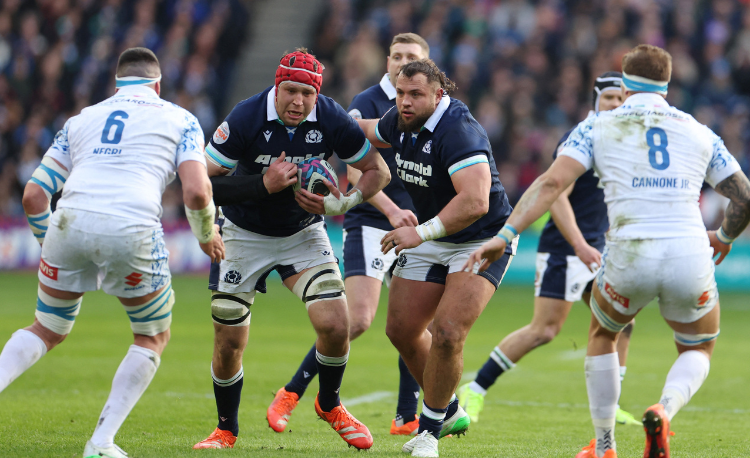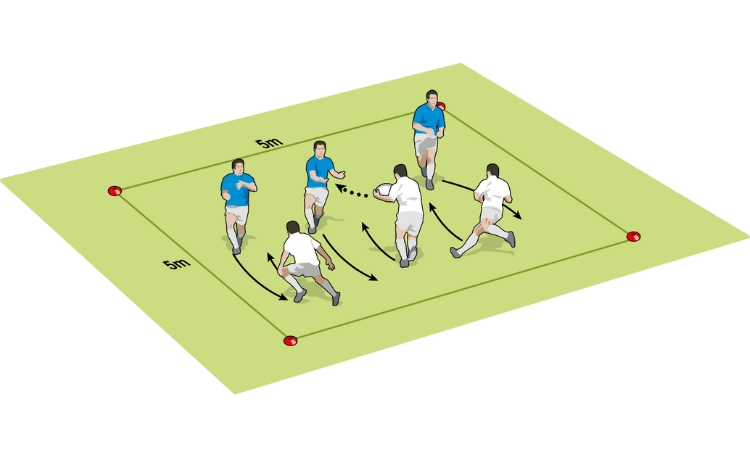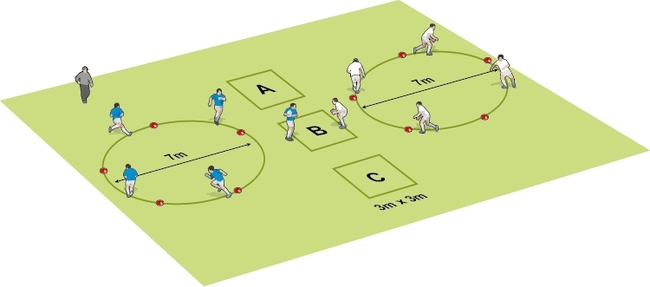Rugby coaching tips on defending close to the ruck
One player stands behind the ruck to organise your players. This may be the scrum half (the number 9). Defensively, this player provides protection from a drive through the ruck.
If the ball is won, this player would have the option to kick or pass, either for another player to kick or to initiate an attack.
Two players stand either side of the ruck. The closest player to the ruck is the “pillar” or “guard”.
They stand just by the back foot and ensure no player attacks by the side of the ruck. The second player out is the “post” or “bodyguard”. They should stand no more than two arms’ lengths away from the “guard”, protecting the outside.
They can also double up if an attack comes close into the ruck.

The three-point stance
If they have time, players close to rucks could adopt a “three-point stance”. This means they make three contact points with the ground, two legs and one arm.
From this stance they are in a good position to drive forward to tackle players close to the ruck. It is based on American Football’s “linemen”.

This article is from The Ruck and How to Win It.
Newsletter Sign Up
Coaches Testimonials

Gerald Kearney, Downtown Las Vegas Soccer Club

Paul Butler, Florida, USA

Rick Shields, Springboro, USA

Tony Green, Pierrefonds Titans, Quebec, Canada
Subscribe Today
Be a more effective, more successful rugby coach
In a recent survey 89% of subscribers said Rugby Coach Weekly makes them more confident, 91% said Rugby Coach Weekly makes them a more effective coach and 93% said Rugby Coach Weekly makes them more inspired.
Get Weekly Inspiration
All the latest techniques and approaches
Rugby Coach Weekly offers proven and easy to use rugby drills, coaching sessions, practice plans, small-sided games, warm-ups, training tips and advice.
We've been at the cutting edge of rugby coaching since we launched in 2005, creating resources for the grassroots youth coach, following best practice from around the world and insights from the professional game.




